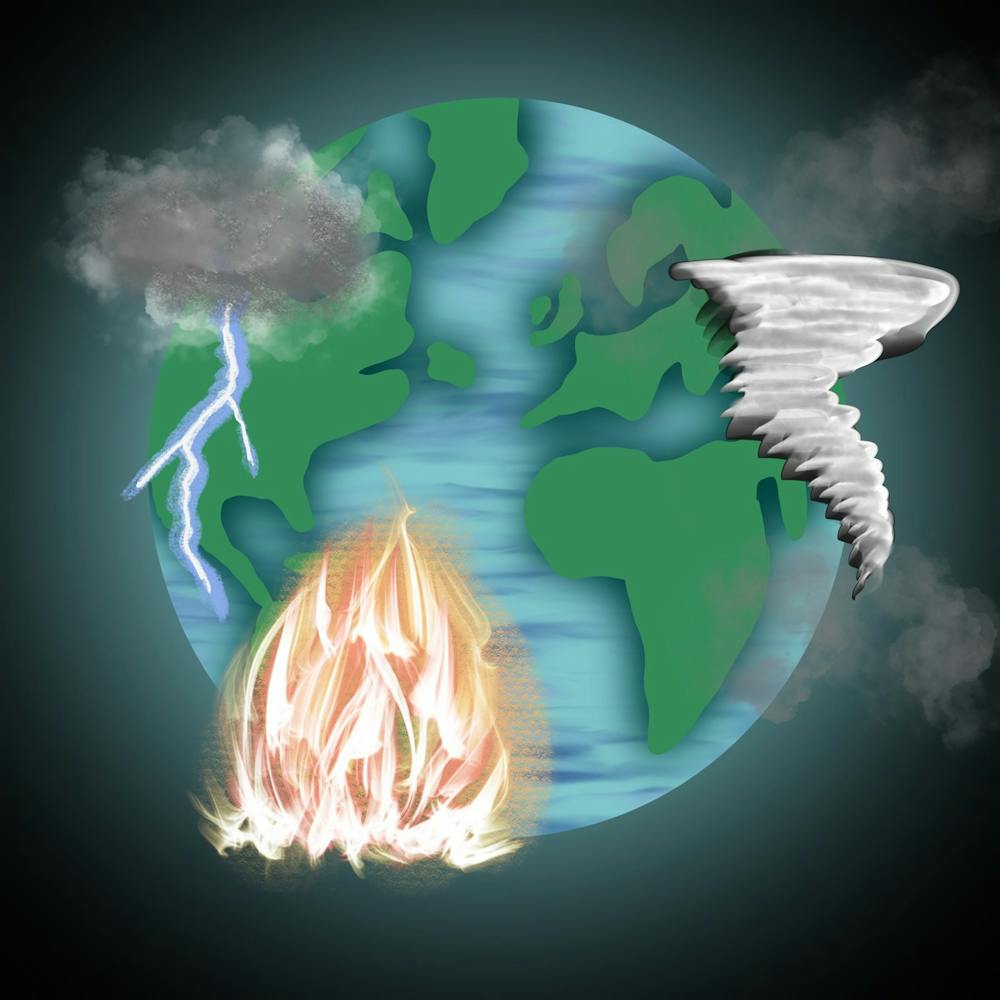Three tornadoes tore through parts of Rhode Island earlier this month, marking the first time a November tornado has touched down in the state since 1950.
On Nov. 13, several warnings were issued across the Ocean State by the National Weather Service as strong, fast-moving storms showed signs of developing into tornadoes. The three tornadoes caused property and infrastructure damage, leaving 11,000 Rhode Islanders without electricity.
The Herald spoke to several University researchers to learn about the implications of the recent tornadoes and their possible connections to longer-term climate change.
These tornadoes were odd for a variety of reasons. “It’s weird because we don’t normally have that kind of storm activity this late in the year. It’s also weird because the storms spawned so many tornadoes,” said University Professor of Earth, Environmental and Planetary Sciences Baylor Fox-Kemper, who was also coordinating lead author for the Sixth Assessment Report of the United Nations Intergovernmental Panel on Climate Change.
“We normally have just a handful of tornadoes every year, but this was three (tornadoes) in a storm,” he added.
“Tornadoes in Rhode Island are fairly rare but not unheard of,” wrote Professor of Earth, Environmental and Planetary Sciences Steven Clemens in an email to The Herald. “However, it’s not likely that the frequency of tornadoes in this part of the country can be specifically linked to climate change” given the small number of tornado events, he added.
Anthropogenic climate change, which comes about due to human impact, results in patterns that are large at scale, so “it’s very difficult to attribute any singular weather event to climate change,” said Deputy Director of the Institute at Brown for Environment and Society Meredith Hastings.
Still, climate change produces known patterns that can potentially affect the formation of tornadoes, according to Fox-Kemper. “We know that climate change is making our atmosphere and oceans warmer,” he said, adding that warmer oceans and atmospheres produce warm, moist air, which contributes to the conditions conducive to tornado formation.
At the same time, though, climate change has increased wind shear — the phenomena of wind going in different directions at different altitudes, Fox-Kemper said. Wind shear works against the formation of tornadoes in thunderstorms by preventing the storm from rotating and forming a coherent spinning structure, he added.
“It’s not clear what will be the dominant effect,” Fox-Kemper said. “Some changes are conducive to the formation of (tornadoes) and some ... are opposed. It’s hard to guess which one wins out.”
Reflecting on the November tornados, researchers spoke to The Herald about the broader implications of climate change in Rhode Island.
“Here in Rhode Island, we are experiencing about three additional weeks of uncomfortably hot weather during the summers than we did in the 1950’s. Heat-related Emergency Room visits may increase by ~400 per year by 2050,” Clemens wrote. “RI’s larger long-term problem will be sea level rise, which has been measured ~3 times the global average,” he added.
Since 1900, “we’ve seen the sea level rise about 20 centimeters so far. The surface temperature of Narragansett Bay is warming about a quarter of a degree Celsius per decade, which is faster than the rate of warming in other locations” across the United States, Fox-Kemper said.
To combat climate change, Rhode Island needs to implement two strategies, according to Fox-Kemper: reducing greenhouse gas emissions while producing greener electricity and “adapting to climate change that is already coming.” Examples of the latter include actions that range from “lifting things up higher (to protect them) from sea level rise … to helping people move out of regions that have become unsafe due to climate change,” he added.
Within Providence, the City of Providence’s 2019 Climate Justice Plan — a set of objectives, targets and strategies to create a low-carbon, climate-resilient city — is a step in the right direction, Hastings said. Beyond this, “we really need initiatives that are more regional in extent to start to make a difference,” she added.
Within Brown, a new Climate Solutions Lab was founded through the Watson Institute, The Herald previously reported. “It’s really important to bring together academic scientists and academic policy experts,” Hastings said. “We understand the science behind what’s happening and ... want to partner up to come up with more solutions based ideas versus just diagnosing the problem,” she added.

Jared is a Senior Staff Writer for Science and Research. He is a senior from Albuquerque, New Mexico studying physiology and biotechnology. Outside of The Herald he likes to fish, ride bikes and research the role of metals in human health and disease.





